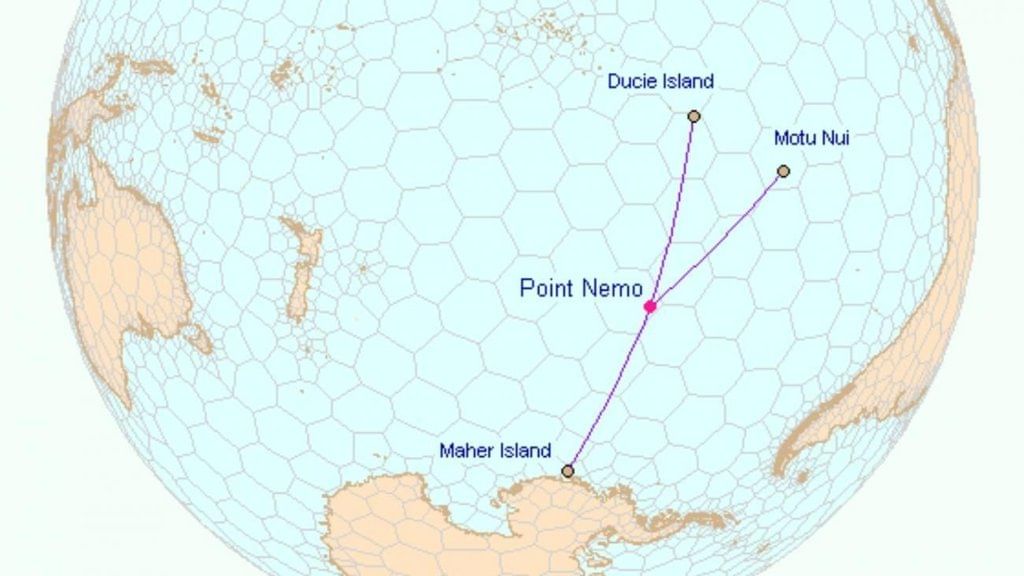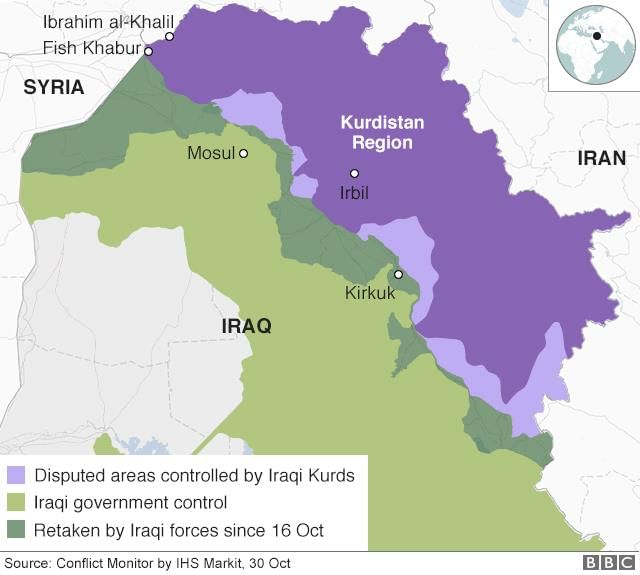UPSC Daily Current Affairs: 31st January 2025 | Current Affairs & Hindu Analysis: Daily, Weekly & Monthly PDF Download
GS2/Polity
Supreme Court Relaxes Condition for Appointment of Ad Hoc Judges to HCs
Source: The Hindu
 Why in News?
Why in News?
The Supreme Court has modified its previous conditions regarding the appointment of ad hoc judges in High Courts to help alleviate the backlog of pending criminal cases. The Court ruled that these appointments can now occur even when the vacancies do not exceed 20% of the sanctioned strength, a condition previously set in an April 2021 judgment in the case of Lok Prahari versus Union of India.
- The Supreme Court has eased the restrictions on appointing ad hoc judges in High Courts.
- Ad hoc judges can be appointed regardless of the 20% vacancy rule.
- Retired judges can serve with the same powers as regular judges but will not be permanent.
Additional Details
- Article 224A: This article of the Constitution allows for the appointment of retired judges in High Courts to help manage case backlogs. The Chief Justice of a High Court, with the President’s consent, can request a retired judge to serve.
- Guidelines for Appointment: Chief Justices can recommend retired judges, with each High Court allowed to appoint between 2 to 5 ad-hoc judges, not exceeding 10% of its sanctioned strength.
- Modification of Earlier Conditions: The Supreme Court has lifted previous restrictions, including the requirement that vacancies should not exceed 20% of sanctioned strength prior to appointing ad-hoc judges.
- No Fixed Timeline: While the Supreme Court did not establish a fixed timeline for these appointments, it has urged that the process should commence immediately.
- Pendency Crisis: This ruling addresses the significant backlog of cases in High Courts, which currently exceeds 60 lakh, including nearly 20 lakh criminal appeals.
The Supreme Court's decision aims to expedite the judicial process in High Courts by utilizing retired judges to manage the overwhelming number of pending cases, thereby improving the efficiency of the legal system.
GS1/Geography
Key Facts about Point Nemo
Source: Economic Times
 Why in News?
Why in News?
Recently, two young women officers of the Indian Navy aboard the sailing vessel INSV Tarini successfully crossed Point Nemo in the southern Pacific Ocean as part of their circumnavigation efforts under Navika Sagar Parikrama-II.
- Point Nemo: Known as the Oceanic Pole of Inaccessibility, it is the farthest point from any landmass on Earth.
- Location: Located approximately 2,688 km from the nearest landmass, Point Nemo is situated in the South Pacific Ocean.
- Named After: It derives its name from Captain Nemo, a character in Jules Verne's novel "Twenty Thousand Leagues Under the Sea."
- Isolation: The closest human presence is often from the International Space Station, which orbits above this remote location.
- Nearby Landmarks: Ducie Island to the north, Motu Nui to the northeast, and Maher Island to the south.
Additional Details
- Marine Life: The waters around Point Nemo are known for having very little marine life due to its isolation.
- South Pacific Gyre: This region falls within the South Pacific Gyre, which is recognized for its clear and biologically inactive ocean waters.
- Space Junk Disposal: Due to its remoteness and minimal marine traffic, Point Nemo has become a favored site for space agencies to dispose of space debris.
In conclusion, Point Nemo not only holds geographical significance as the most isolated point on Earth but also serves practical purposes in terms of space exploration and environmental conservation.
GS3/Science and Technology
Controlled Cannabis Cultivation
Source: Indian Express
 Why in News?
Why in News?
The Himachal Pradesh Cabinet has recently approved a pilot study conducted by two universities on the controlled cultivation of cannabis for both medicinal and industrial applications.
- The cultivation involves specific cannabis varieties with minimal intoxicating effects.
- Controlled cannabis must have a tetrahydrocannabinol (THC) content of 3% or less.
- The focus is on non-narcotic applications, particularly in pharmaceuticals and industrial uses.
Additional Details
- Uses of Hemp: Hemp can be processed into various products including textiles, paper, food, cosmetics, and biofuels. Notably, cannabidiol (CBD) compounds found in hemp are known for their effectiveness in treating chronic pain.
- Laws Related to Cannabis Cultivation in India: Cannabis cultivation is largely prohibited in India due to its psychoactive properties. The Narcotic Drugs and Psychotropic Substances (NDPS) Act, 1985 prohibits the production and sale of cannabis resin and flowers, defining charas and concentrated preparations such as hashish oil.
- Exceptions exist for cannabis cultivation for industrial and medicinal purposes under government regulations. Section 10 allows state governments to regulate cannabis cultivation, while Section 14 grants the Central government authority to authorize and regulate it for research or approved purposes.
The move towards controlled cannabis cultivation aims to explore its potential benefits while ensuring strict regulations to prevent misuse.
GS2/Governance
Mahakumbh Stampede: Understanding the Causes and Strategies for Prevention
Source: Times of India
Why in News?
A tragic stampede occurred at the Mahakumbh Mela in Allahabad on January 29, resulting in multiple fatalities. The Chief Minister of Uttar Pradesh attributed the incident to the massive influx of people gathering for the auspicious occasion of Mauni Amavasya. The National Disaster Management Authority (NDMA) had previously published a report in 2014 addressing crowd management at large events, noting that most crowd disasters in India and developing countries tend to happen at religious sites.
- Stampedes can arise from various factors including poor infrastructure and inadequate crowd control measures.
- The NDMA report emphasizes the need for proactive planning and effective crowd management strategies.
Additional Details
- Failures in Crowd Control:The NDMA report highlights critical failures such as:
- Underestimating crowd sizes.
- Surpassing venue capacity.
- Having limited holding areas before entry.
- Exits being locked or closed.
- Weak railings and poor queue management.
- Absence of sectoral partitions to guide movement.
- Consequences of Poor Management: Inadequate crowd management can lead to panic, resulting in crush injuries and fatalities, primarily due to compressive asphyxia.
- Understanding Crowd Behaviour: The behavior of individuals can significantly influence the actions of the larger crowd, necessitating a community-based approach to crowd control rather than aggressive measures.
- Impact of Overcrowding: When demand exceeds available space, it can lead to dangerous overcrowding. Implementing input control methods, such as mandatory registration, can help manage crowd sizes.
- Past Stampede Incidents:The report references several notable stampedes, including:
- Nashik Kumbh (August 2003): 29 pilgrims died due to overcrowding and sudden crowd reversal.
- Kalubai Yatra Mandhardevi (January 2005): 293 fatalities occurred due to inaccurate crowd estimates and inadequate infrastructure.
The NDMA report stresses that with appropriate planning and execution, many stampedes can be prevented. It advocates for a holistic approach that includes managing crowd inflow, behavior within the venue, and outflow. Authorities are encouraged to analyze historical data and implement effective registration systems to control crowd dynamics. By enhancing infrastructure and ensuring adequate facilities at religious sites, authorities can better manage large gatherings and ensure visitor safety.
GS2/Polity
What is the Enforcement Case Information Report (ECIR)?
Source: Indian Express
 Why in News?
Why in News?
The Enforcement Directorate (ED) has recently notified the Kerala High Court about the registration of 18 Enforcement Case Information Reports (ECIRs) against various cooperative banks and societies in Kerala. This move is part of an investigation into money laundering related to financial irregularities.
- The ECIR is a formal record of complaints filed by the Enforcement Directorate.
- It is the starting point for ED's actions, such as asset attachments and potential arrests.
- The ECIR is not mentioned in the Prevention of Money Laundering Act, 2002 (PMLA Act) or its rules.
- It is internally used by the ED for case identification and management.
Additional Details
- ECIR vs FIR: While the ECIR serves a similar purpose to a First Information Report (FIR) in police investigations, the Supreme Court has clarified that they cannot be equated.
- Legal Status: The ECIR is considered an internal document, and the ED is not obligated to provide a copy of it to the accused.
- The ECIR is utilized by the ED as part of its protocol before initiating actions under the PMLA Act.
In summary, the Enforcement Case Information Report (ECIR) is a crucial internal document for the Enforcement Directorate, marking the commencement of investigations into potential money laundering activities, particularly within the cooperative banking sector in Kerala.
GS3/Science and Technology
Asteroid Bennu Samples hold Secrets of Life’s Origins
Source: NDTV
 Why in News?
Why in News?
The NASA OSIRIS-REx (Origins, Spectral Interpretation, Resource Identification, Security–Regolith Explorer) mission has successfully delivered samples from asteroid Bennu. These samples contain critical components such as amino acids, nucleobases, and evidence of ancient saltwater, which are essential in understanding the origins of life.
- 14 out of 20 essential amino acids for proteins on Earth were discovered in the samples.
- All five nucleobases used in DNA and RNA were detected, indicating prebiotic chemistry beyond Earth.
- Compounds like ammonia and formaldehyde can react to form complex organic molecules under suitable conditions.
- Evidence supports the idea that asteroids delivered vital building blocks for life to early Earth.
- Minerals such as calcite, halite, sylvite, and trona indicate prolonged exposure to liquid water.
- Similar briny conditions have been observed on celestial bodies like Ceres and Enceladus, suggesting widespread environments suitable for organic chemistry in the solar system.
- While life on Earth exclusively utilizes left-handed amino acids, Bennu samples show an equal mix, raising questions about the evolution of this preference.
Additional Details
- About Asteroid Bennu: Bennu is a carbon-rich asteroid orbiting between Earth and Mars. It is considered a primitive remnant of the early solar system and holds clues to the origins of life.
- The asteroid is porous, containing up to 60% empty space, which influences its collision potential with Earth in the distant future.
- Bennu is classified as an active asteroid, periodically ejecting material.
- The OSIRIS-REx mission, launched in 2016, was NASA's first asteroid sample-return mission. It arrived at Bennu in 2018, mapped its surface for two years, and collected samples in 2020, successfully returning them to Earth in 2023.
- The mission aimed to analyze Bennu's composition, understand its water history, and study the materials that may have contributed to the origin of life.
The findings from the OSIRIS-REx mission significantly strengthen the theory that asteroids contributed to the origins of life by delivering organic molecules and water. It confirms that essential ingredients for life were widespread in the early solar system, increasing the possibility of life beyond Earth. Additionally, it aids in refining planetary defense strategies, as Bennu has a small chance of impacting Earth in the future.
GS2/International Relations
Kurdistan Region in the News
Source: Forbes
 Why in News?
Why in News?
India has recently sent a humanitarian aid consignment to the Kurdistan region of Iraq, highlighting the ongoing support for this area amidst geopolitical tensions and humanitarian needs.
- The Kurdistan Region is primarily inhabited by ethnic Kurds across Iraq, Iran, Syria, and Turkey.
- The Kurdistan Regional Government (KRG) administers the autonomous region of Iraqi Kurdistan in northern Iraq.
- The region is rich in oil and natural gas, making it geopolitically significant.
Additional Details
- Geographical Significance: The Kurdistan Region spans across Turkey, Iraq, Iran, and Syria, featuring the Zagros Mountains and fertile plains.
- Political Implications: The Kurdish pursuit of autonomy has created tensions with the central governments of Iraq and Turkey. The Kurdish forces, known as Peshmerga, have played a crucial role in combating ISIS and ensuring security in northern Iraq.
- The KRG maintains diplomatic relations with Western countries; however, it lacks full sovereignty.
- Ongoing Dispute: The Kurdish independence movement faces opposition from Iraq, Turkey, Iran, and Syria, which fear territorial fragmentation. Iraq rejected the 2017 Kurdistan independence referendum, resulting in military and economic repercussions.
- Turkey continues military operations against Kurdish groups, viewing them as a security threat, and the relationship between Turkey, ISIS, and the Kurds remains controversial.
The situation in the Kurdistan Region is complex, influenced by historical aspirations for autonomy, ongoing geopolitical tensions, and significant natural resources that underscore its importance in regional stability.
GS3/Economy
e-Shram Microsite and Occupational Shortage Index
Source: PIB
 Why in News?
Why in News?
The Union Minister for Labour & Employment has recently launched two pivotal initiatives: the State and Union Territory Microsites under the e-Shram initiative and the Occupational Shortage Index (OSI). These initiatives aim to improve the accessibility and effectiveness of welfare programs for unorganised workers and address skill shortages in the labor market.
- The e-Shram Microsite provides unorganised workers with streamlined access to welfare programs from both State and Central governments.
- The Occupational Shortage Index (OSI) offers insights into job shortages, aligning job seekers' skills with industry needs.
Additional Details
- e-Shram Microsite: This initiative is designed as a state-specific digital platform integrated with the national e-Shram database. It simplifies the registration process for unorganised workers and provides a one-stop solution for accessing welfare programs, employment opportunities, and skilling programs.
- Features: The microsite enables real-time analytics, multilingual accessibility, and ensures that workers receive updates on welfare schemes and job opportunities through two-way integration with the e-Shram database.
- Occupational Shortage Index (OSI): This index identifies occupations facing shortages and assists policymakers and training institutions in bridging skill gaps. It aids in effective decision-making related to workforce planning and skill development, ultimately guiding targeted training programs.
These initiatives are significant for enhancing transparency, efficiency in welfare service delivery, and optimizing the job market by aligning skills with demand in high-growth sectors.
GS3/Science and Technology
Human African Trypanosomiasis
Source: WHO
 Why in News?
Why in News?
The World Health Organization (WHO) has recently announced that Guinea has successfully eliminated the gambiense form of Human African Trypanosomiasis (HAT), commonly known as sleeping sickness, as a public health threat.
- HAT is a parasitic disease transmitted by the bite of infected tsetse flies.
- It is endemic in sub-Saharan Africa, with two primary forms caused by different subspecies of the parasite.
- Guinea's achievement marks a significant milestone in the global effort to combat this disease.
Additional Details
- Symptoms: The disease typically begins with non-specific symptoms such as fever, headaches, and joint pain, which can progress to neurological issues including confusion, sleep disturbances, and behavioral changes. If untreated, it can lead to death.
- Forms of the Disease:
- Trypanosoma brucei gambiense: Responsible for 92% of reported cases, found in 24 countries of West and Central Africa, and causes chronic illness. Symptoms may not appear for months or years, often leading to advanced disease by the time they do.
- Trypanosoma brucei rhodesiense: Accounts for 8% of cases, found in 13 countries of Eastern and Southern Africa, and leads to an acute form of the disease. This form is more prevalent among rural populations engaged in agriculture, fishing, and animal husbandry.
- As of now, the WHO has validated the elimination of the gambiense form of HAT in seven countries: Togo (2020), Benin (2021), Ivory Coast (2021), Uganda (2022), Equatorial Guinea (2022), Ghana (2023), and Chad (2024).
The progress in combating Human African Trypanosomiasis represents a significant public health achievement and highlights the importance of continued efforts and vigilance in disease control and elimination strategies.
GS3/Science and Technology
Axiom-4 Mission (Ax-4)
Source: Business Standard
 Why in News?
Why in News?
Shubhanshu Shukla, an officer of the Indian Air Force (IAF) and an astronaut with the Indian Space Research Organisation (ISRO), has been appointed as the pilot for the Axiom Mission 4 (Ax-4). This mission marks a significant milestone in the collaboration between space agencies.
- Ax-4 is the fourth private astronaut mission to the International Space Station (ISS).
- The mission is organized by Axiom Space in partnership with various agencies.
- The Axiom-4 crew will launch on a SpaceX Dragon spacecraft from NASA's Kennedy Space Center in Florida.
- The astronauts plan to spend up to 14 days on the ISS conducting various activities.
Additional Details
- Scientific Research: The crew will engage in a variety of scientific experiments and technology demonstrations, focusing on areas such as materials science, biology, and Earth observation. These efforts may lead to groundbreaking discoveries and innovations.
- International Collaboration: This mission is notable for sending the first Indian astronaut to the ISS, part of a joint initiative between NASA and the Indian space agency. It will also include astronauts from Poland and Hungary.
The Axiom-4 mission represents a significant step forward in private space exploration and international cooperation in scientific research, showcasing the potential for future missions and collaborations in space.
GS2/Governance
The Science is Clear, Crowd Disasters Are Preventable
Source: The Hindu
 Why in News?
Why in News?
The recent disaster at the Maha Kumbh in India, which resulted in the tragic loss of 30 lives, serves as a stark reminder of the inherent dangers associated with high-density crowds. Despite existing scientific research that offers clear preventive measures, local governments and event organizers often neglect necessary precautions. Consequently, it is crucial to explore the causes of crowd crushes, their global impact, the need for stricter regulations, and better crowd management strategies to avert future tragedies.
- Crowd crushes occur due to excessive density, leading to loss of movement control.
- Historical misconceptions attribute crowd crushes to panic, which is scientifically debunked.
- Economic incentives often lead organizers to prioritize profit over safety.
- Implementing effective crowd management strategies is essential to prevent disasters.
Additional Details
- Crowd Density and Safety: Research indicates that injuries begin at a density of five people per square meter. At seven people per square meter or more, severe injuries or fatalities can occur due to restricted movement and breathing difficulties.
- Recent Examples: Notable incidents include the 2021 Astroworld concert in Houston and the 2022 Itaewon Halloween tragedy in South Korea, highlighting the global prevalence of crowd-related disasters.
- Myths About Crowd Behavior: The prevailing belief that panic causes crowd crushes is unfounded; instead, extreme density is the primary factor leading to such tragedies.
- Economic Considerations: Organizers often avoid implementing safety measures due to financial motivations, prioritizing attendance and profit margins over crowd safety.
- Preventive Measures: Effective crowd management can include venue design, sufficient entry and exit points, staggered arrivals and departures, real-time monitoring, and crowd segmentation strategies.
The loss of life at the Maha Kumbh, akin to numerous other crowd crush incidents, was not an unavoidable accident but a preventable failure in planning and regulation. Scientific research has consistently highlighted the mechanisms behind these disasters. However, both event organizers and governments frequently overlook basic safety measures. Until proactive measures are taken to enforce proper crowd management, tragically, such incidents will continue to threaten innocent lives. A commitment to safety, strict regulations, and improved planning are essential in preventing future crowd disasters.
GS3/Economy
Cabinet Approves Mechanism for Procurement of Ethanol by Public Sector Oil Marketing Companies (OMCs) under EBP Programme
Source: Business Standard
 Why in News?
Why in News?
The Cabinet Committee on Economic Affairs (CCEA) has recently approved a revision in the ethanol procurement price for Public Sector Oil Marketing Companies (OMCs) for the Ethanol Supply Year (ESY) 2024-25, highlighting the government's commitment to enhancing ethanol production and supply in India.
- The ethanol procurement price has increased from ₹56.58 to ₹57.97 per litre.
- This revision aims to support sugarcane farmers and enhance their income.
- The price increase is significant for meeting the ambitious ethanol blending target of 20% by 2025-26.
- This initiative contributes to reducing India’s dependency on crude oil imports.
Additional Details
- Ethanol Blended Petrol (EBP): The EBP Programme promotes blending ethanol with petrol, aiming to create a more sustainable fuel option and reduce reliance on imported crude oil.
- Blending Statistics: Ethanol blending has surged from 38 crore litres in ESY 2013-14 to 707 crore litres in ESY 2023-24, achieving an average blending rate of 14.60%.
- Financial Impact: This programme has resulted in estimated savings of over ₹1,13,007 crore in foreign exchange and has substituted approximately 193 lakh metric tonnes of crude oil over the past decade.
This price revision not only fosters the growth of the ethanol sector but also strengthens the agricultural economy by supporting farmers, while aiding in the nation's broader goal of energy independence and environmental sustainability.
|
51 videos|5377 docs|1138 tests
|
FAQs on UPSC Daily Current Affairs: 31st January 2025 - Current Affairs & Hindu Analysis: Daily, Weekly & Monthly
| 1. What is the significance of the Supreme Court's decision to relax conditions for appointing Ad Hoc judges to High Courts? |  |
| 2. What are the key facts about Point Nemo and its importance? |  |
| 3. What are the regulations surrounding controlled cannabis cultivation in India? |  |
| 4. What were the primary causes of the Mahakumbh stampede, and what strategies can be implemented for future prevention? |  |
| 5. What is the Enforcement Case Information Report (ECIR) and its relevance in legal proceedings? |  |
















